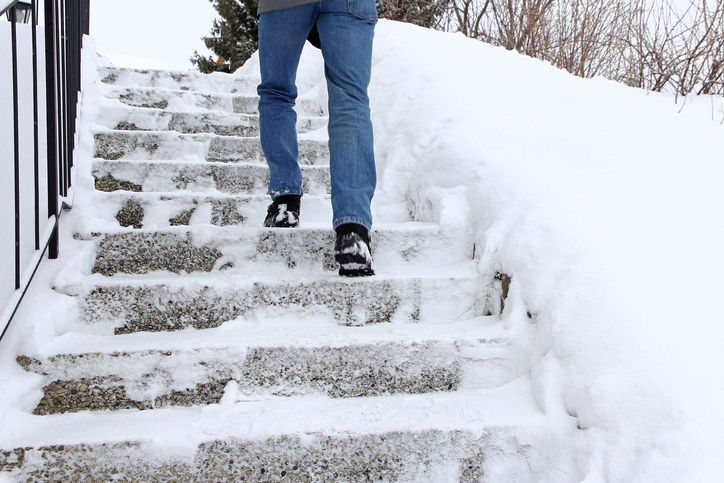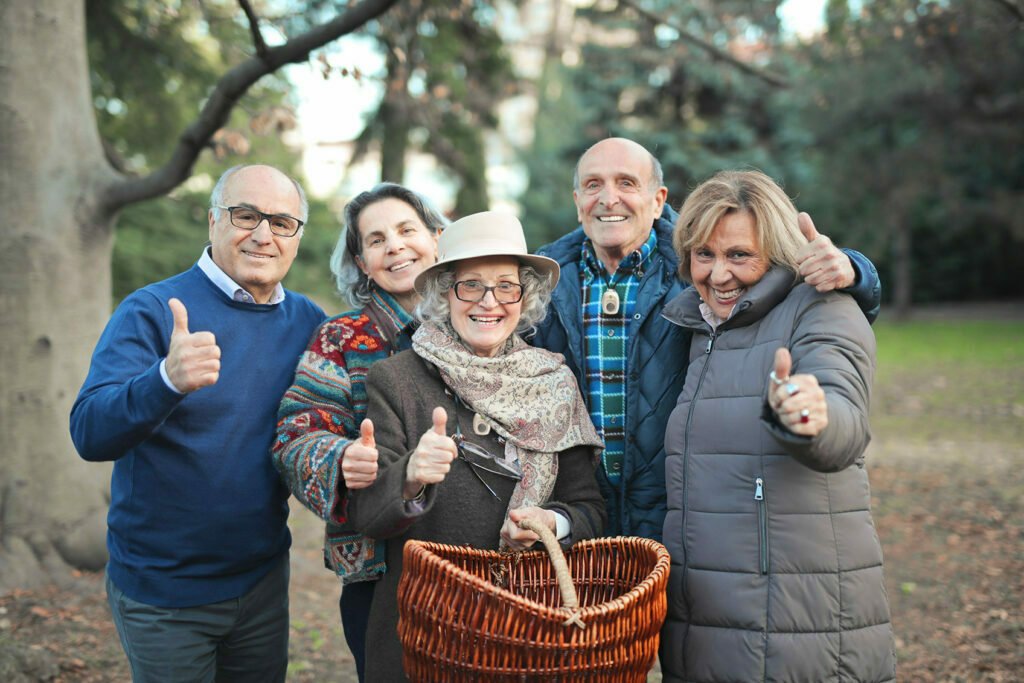Cold Winter Challenge: Safeguarding Seniors and Disabled Individuals in Canada 2024
Cold Winter Challenge: Winter in Canada brings not only the picturesque landscapes of snow-covered mountains and frost-kissed trees but also unique challenges, especially for seniors and disabled individuals. The cold temperatures, slippery surfaces, and isolation during the winter months can pose significant risks to the well-being of these vulnerable populations. In this comprehensive blog post, we will delve into the specific risks faced by seniors and disabled individuals in Canada during the winter and offer practical recommendations to navigate these challenges.
1. Cold Winter Challenge and Health Concerns
The biting cold of Canadian winters is more than discomfort; it poses significant health risks, especially for seniors. Hypothermia, a condition where the body’s temperature drops below a critical level, becomes a genuine threat. Seniors, due to factors such as limited mobility and reduced temperature-sensing abilities, are particularly vulnerable.

Hypothermia can manifest in symptoms such as shivering, pale skin, lack of coordination, confusion, slowed reactions, weakness, and sleepiness. Caregivers must be vigilant, as seniors may not exhibit shivering, making early detection challenging. If hypothermia is suspected, immediate medical attention, including calling 911, is paramount.
In addition to hypothermia, frostbite becomes a concern, especially for seniors with circulation issues. Frostbite can damage the skin, progressing to the bone, and commonly affects extremities. Prevention involves covering exposed skin, and symptoms include white or waxy skin, numbness, and pain. In the case of frostbite, it’s important to immerse affected areas in warm (not hot) water and seek immediate medical help, as it may coincide with hypothermia.
Furthermore, the winter weather increases the risk of heart attacks and high blood pressure in seniors. Cold temperatures trigger the sympathetic nervous system and catecholamine release, leading to heightened blood pressure and strain on the heart. Regular monitoring and prompt medical attention for unusual symptoms become crucial during the winter months.
2. Slippery Surfaces and Fall Prevention
One of the most immediate Cold Winter Challenge is the presence of slippery surfaces caused by ice and snow accumulation. Seniors and disabled individuals may find it challenging to navigate icy sidewalks, driveways, and parking lots, leading to an increased risk of falls. Falls can result in serious injuries, including fractures and head trauma, with potentially long-lasting consequences.
To mitigate the risk of falls, seniors and disabled individuals are encouraged to take preventive measures. Using mobility aids equipped with winter tires, wearing appropriate footwear with slip-resistant soles, and installing handrails along walkways can significantly reduce the risk of accidents. Additionally, maintaining driveways and sidewalks free of ice and snow is essential for community safety.
3. Limited Mobility and Accessibility Challenges

Snow and ice accumulation present a formidable Cold Winter Challenge for those with limited mobility or disabilities. Navigating through snow-covered sidewalks and roadways becomes a daunting task, restricting outdoor activities and impacting overall mobility. To address this, it’s crucial to consider assistive devices such as canes, walkers, or wheelchairs equipped with appropriate winter tires.
Home modifications can also play a vital role in improving accessibility. Installing handrails, ramps, and non-slip mats can enhance safety within homes, providing a secure environment for seniors and disabled individuals. These modifications not only reduce the risk of accidents but also promote independence and confidence.
4. Isolation and Mental Well-being
Harsh winter conditions often result in isolation for seniors and disabled individuals. The Cold Winter Challenge of venturing outside in cold weather, coupled with potential transportation difficulties, contribute to social withdrawal. This isolation can have significant implications for mental well-being, leading to feelings of loneliness and, in some cases, exacerbating conditions like winter depression.
Winter depression, or Seasonal Affective Disorder (SAD), is a type of depression that occurs at a specific time of year, usually during the winter months when sunlight exposure is limited. Seniors, in particular, may experience an intensification of pain perception during this period. To counteract these effects, it’s essential to encourage community support networks, connect with neighbours, and provide indoor activities and social opportunities for seniors and disabled individuals.
Additionally, ensuring an adequate intake of Vitamin D, which is found in fortified foods like milk, grains, tuna, and salmon, can be beneficial for mental well-being. Vitamin D deficiency is common in winter due to reduced sunlight exposure, and supplementation can play a role in mitigating the effects of winter depression.
5. Power Outages and Emergency Preparedness

Winter storms can lead to power outages, disrupting heating systems and medical equipment that some seniors and disabled individuals rely on for their daily lives. Having contingency plans and access to emergency services becomes crucial during such situations.
Ensuring that homes are adequately insulated and heated is a fundamental step in winter preparedness. Stocking up on essential supplies, including medications and non-perishable food items, is essential to weathering potential storms and power outages. Having a well-thought-out emergency kit that includes blankets, flashlights, medications, and a battery-powered radio can provide a sense of security during unexpected disruptions.
6. Transportation Cold Winter Challenge and Health Conditions Exacerbation
Snowstorms and icy roads can disrupt public transportation services, making it difficult for seniors and disabled individuals to travel for essential needs such as medical appointments or grocery shopping. This transportation challenge not only poses practical difficulties but can also exacerbate existing health conditions.
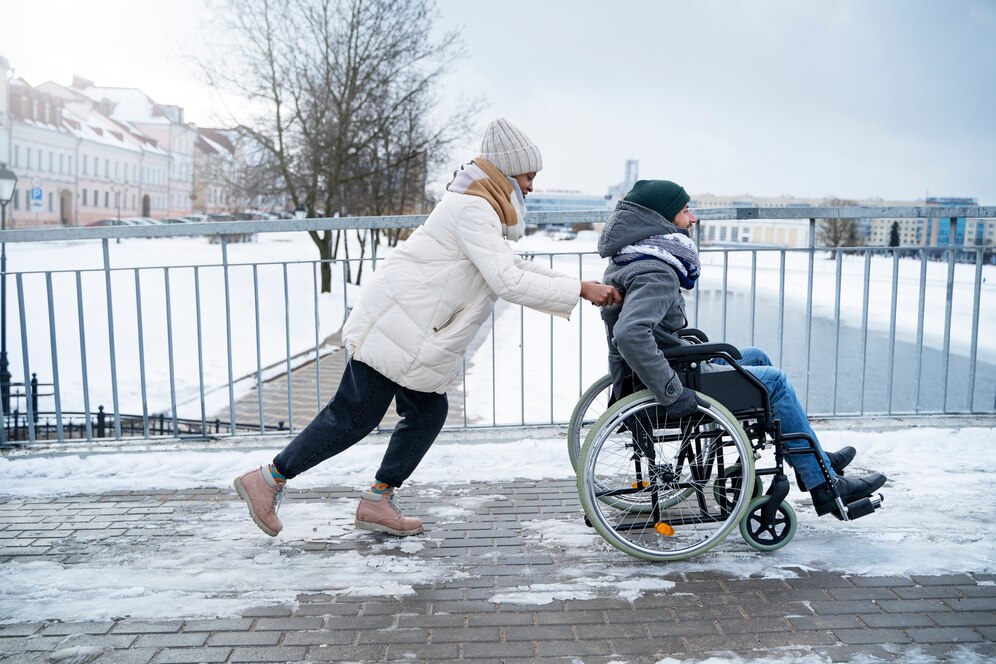
Cold weather can have adverse effects on joint health, leading to increased joint pain. While the exact cause of this phenomenon is not entirely clear, seniors and individuals with arthritis often report heightened discomfort during the winter months. To address this, daily mild exercise, such as indoor swimming, can alleviate joint pain without causing further damage.
Moreover, seniors with respiratory conditions may face lung spasms triggered by inhaling cold air. This is particularly relevant for conditions like asthma or Chronic Obstructive Pulmonary Disease (COPD). Using face masks, commonly known as “ski masks,” available at outdoor stores can help warm inhaled air, reducing the risk of spasms.
7. Mitigating Risks: Practical Measures
To safeguard seniors during Cold Winter Challenge and disabled individuals during the winter months, proactive measures are essential. The following strategies can significantly reduce the risks associated with cold weather:
- Winter Preparedness:
- Ensure that homes are adequately insulated and heated.
- Stock up on essential supplies, including medications and non-perishable food items.
- Keep emergency contact information readily accessible.
- Mobility Assistance:
- Use assistive devices such as canes, walkers, or wheelchairs equipped with appropriate winter tires.
- Consider home modifications to improve accessibility, such as handrails and non-slip mats.
- Community Support:
- Stay connected with neighbours and community support networks during Cold Winter Challenge to assist with snow removal and other winter-related tasks.
- Establish a buddy system where neighbours check on each other during extreme weather conditions.
- Emergency Planning:
- Have an emergency kit ready, including essentials like blankets, flashlights, medications, and a battery-powered radio.
- Develop and communicate an emergency plan with family members, caregivers, or neighbours.
- Regular Health Check-ups:
- Schedule regular health check-ups, especially during the winter months, to monitor and manage any health concerns.
- Ensure that medications are up-to-date, and prescriptions are filled in advance.
8. Recommendations for Enhanced Safety
In addition to the practical measures outlined above, leveraging specialized services and programs can further enhance the safety and well-being of seniors and disabled individuals during the winter:
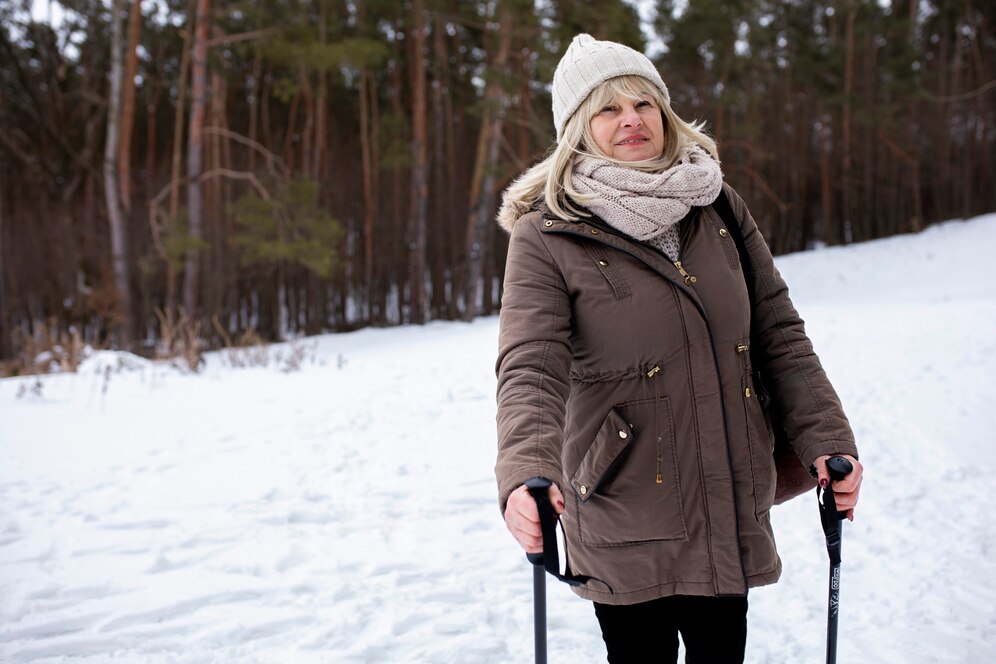
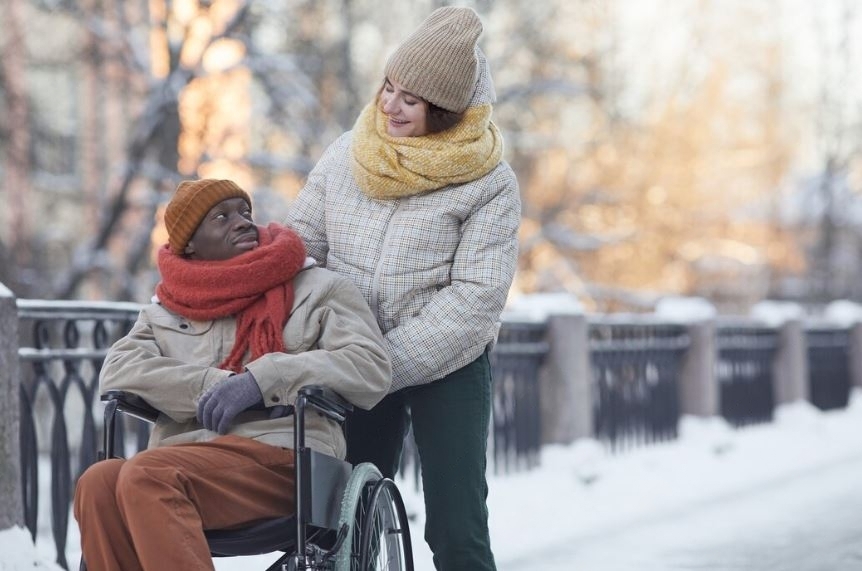
- Medical Alert Systems Health-Alert (Canada):
- Utilize Health-Alert (Canada) medical alert systems for continuous monitoring and quick access to emergency assistance, even during power outages. These systems provide peace of mind for both individuals and their caregivers.
- Take Me Home Program:
- Enroll in the “Take Me Home” program by Health-Alert (Canada) for comprehensive support tailored to the unique needs of seniors and disabled individuals during the winter months. This program includes:
- Non-Emergency Medical Transportation:
- Ensure access to safe and reliable transportation for medical appointments and other essential needs, even in challenging weather conditions.
- Medical Alert System Installations:
- Set up the Health-Alert medical alert system to enhance safety and provide immediate emergency assistance when needed.
- Access to Home Healthcare Providers:
- Connect with verified and reputable home healthcare providers to receive necessary medical support within the comfort of your home.
- Non-Emergency Medical Transportation:
- Enroll in the “Take Me Home” program by Health-Alert (Canada) for comprehensive support tailored to the unique needs of seniors and disabled individuals during the winter months. This program includes:
The “Take Me Home” program is designed to address the holistic needs of seniors and disabled individuals, providing a comprehensive safety net during the winter season.
Conclusion
Winter in Canada is a beautiful but challenging season, particularly for seniors and disabled individuals. Understanding and addressing the specific risks associated with cold temperatures, slippery surfaces, and isolation is paramount for ensuring the safety and well-being of these vulnerable populations.
By implementing proactive measures such as winter preparedness, mobility assistance, community support, and emergency planning, individuals and communities can create a safer environment. Additionally, leveraging specialized services like medical alert systems and comprehensive programs such as the “Take Me Home” initiative can provide an extra layer of protection, offering peace of mind to both individuals and their caregivers.
Seniors and disabled individuals need to be proactive in addressing these challenges, and for communities to implement measures that enhance safety and well-being during the winter season. By working together, we can make the winter months not only visually stunning but also safe and enjoyable for everyone.
More From our Library
The Complex Connection: How Does Mental Health Affect Identity?
The Emotional Impact of Best Senior Emergency Alert System
Reducing the Fear of Falling for Seniors: A Comprehensive Guide
Navigating the Challenges of Dementia Care: Senior Caregiving Tips and Strategies
Balancing Self-Care For Caregivers: Tips for Caregivers
Effective Communication in Senior Caregiving: Tips for Strengthening Relationships 2023
Contact Us
Our team is ready and available to help you find the right solution. Fill out the form to receive a callback or contact us:

